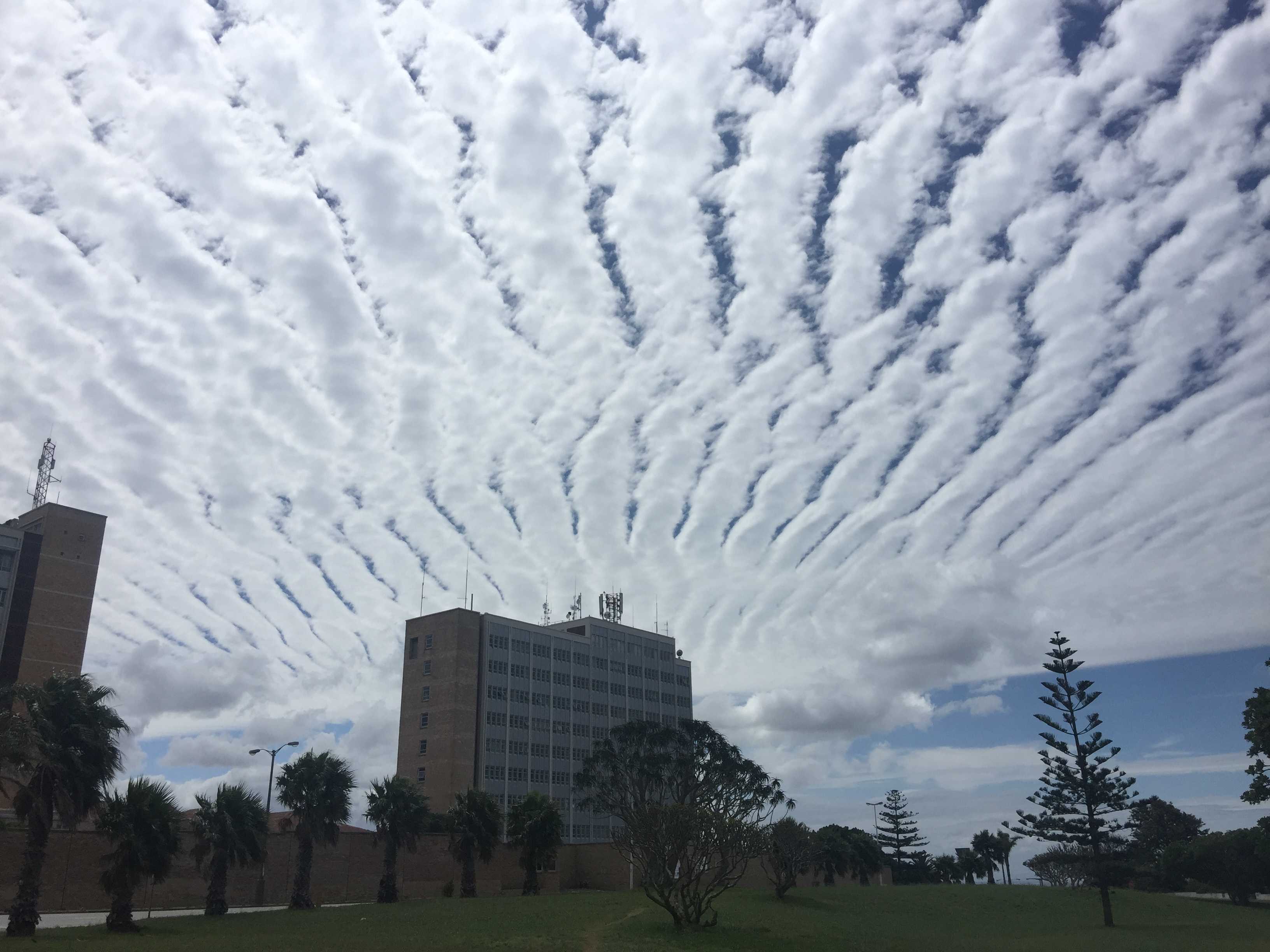CM = 5
(Section 2.8.2.2.5)(a) TECHNICAL SPECIFICATION
Altocumulus translucidus in bands, or one or more layers of Altocumulus translucidus or Altocumulus opacus, progressively invading the sky; these Altocumulus generally thicken as a whole.
(b) EXPLANATION
(i) The main characteristic is Altocumulus invading the sky progressively. The cloud gradually advances from one part of the horizon towards the zenith, whereby the cloud amount increases. The border of the cloud system often passes the zenith and may finally reach the horizon opposite to that from which the cloud first appeared. When looking at the sky, observers will see the cloud system extending down to the horizon in the direction in which the clouds initially appeared; it is also in this direction that the clouds are usually thickest. The main part of the system consists of one or more layers, wholly or partially translucent or wholly or partially opaque. The forward portion of the system, often in the process of dissipation, may consist of small, frayed Altocumulus elements or of rolls or bands, usually observed at a single level and consisting of semi-transparent clouds. This forward portion may cover a large expanse of the sky.
(ii) The coding CM = 5 is not used as soon as the forward edge has reached the part of the horizon opposite to that where the clouds first appeared, or when the forward edge has ceased its progress.
(iii) Altocumulus progressively invading the sky may, at the same time, be changing, either partially or as a whole, into Altostratus or Nimbostratus. If the Altocumulus has partly changed into Altostratus or Nimbostratus, that is, if in a part of the Altocumulus, the evidence for the existence of elements (laminae, rolls, rounded masses, etc.) has disappeared, the coding becomes CM = 7 instead of CM = 5. As soon as the evidence for the existence of elements has disappeared throughout, the coding is CM = 1 or CM = 2, as the case may be.





